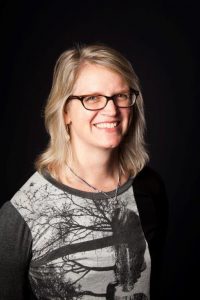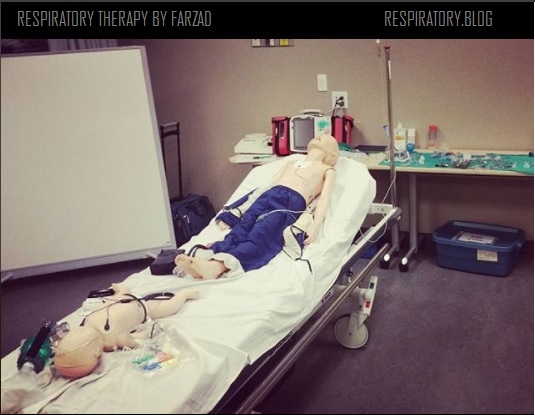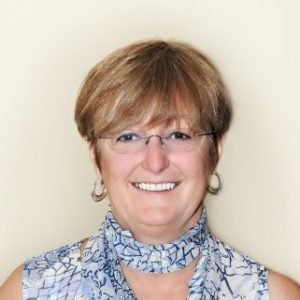November 15th is the World Chronic Obstructive Lung Disease (COPD) Day. Based on a study by World Health Organization (WHO) in 2015, COPD is responsible for “5% of all death globally that year” (WHO. Nov 2016). When it comes to care for COPD patients, many names come to mind; One of these dedicated individuals is Mrs. Sheery Tse.
Sheery is an active RRT who works and volunteers with COPD patients at Markham-Stouffville Hospital and Scarborough and Rough Hospital (Birchmount site).
The first time I met Sheery was in May of 2017 at a social event for COPD patients, where she was facilitating it on her own time. She is passionate about her work and is full of energy. She is praised and respected by her patients and colleagues as she truly cares and advocates for her patients. To get to know her better, I sent Sheery few questions:
- When did you first hear about the respiratory therapy field? What made you decide to become an RT? I heard about being an RT when I did some volunteering at HSC. There I ran into a high school mate who was working as a RT. After spending some time with her and the team, I decided to apply to Michener for the respiratory technology course as it was called many, many years ago.
- What are some of your memorable jobs/roles so far? In an acute setting I was always more interested in helping patients in the ER, providing care so they may breathe easier and giving a quick education of their puffer needs was very rewarding.
Now I love doing education whether it’s in the COPD clinic or at a healthcare office, seeing the patients understand their airway disease and why certain puffers work and how is rewarding.
- What are your career goals? (and do you feel that you have accomplished them?) Given my age and how many years I’ve been in their field, I feel I have accomplished most of what I set out to do. Starting the COPD clinics in Markham and Scarborough from scratch has been very rewarding.
There are still a few goals I would like to see happen, a support group with just patients input and more exercise sessions available would be the biggies. Patients self-management at home is another area I would to see happen too.
- How did you get involved with patient education (with COPD patients)?When Dr. M. Forse first came up with the idea of having a clinic for COPD patients, it sounded like something I would enjoy. I applied and was chosen as the educator. Now came the challenge, getting certified as an educator and quite trained.
- How does a typical day look like for you?
Don’t think there is ever a truly typical day. It could be as simple as setting up for the clinic with patients charts and assessing the patients to triaging all new referrals, returning phone calls and emails from patients to meeting with pharma reps to hear what’s new, studies and of course being the nosy educator what’s on the pipeline for puffers. In between that I also need to triage patients into the exercise programs we have and call to see if they are willing to come in and for afternoons or evenings. Tuesday’s, Wednesday’s and Thursdays, I try to go to the exercise classes to provide some support and answer any question the participants may have. I’ve been called the “spy” as I do inform the respirologists if there are concerns about the participants, including possible flare up and low sats. Through these interactions we have been able to prevent patients from being seen in ER when the respirologists could fax a script for them, or as simple as asking if they started their on-hold meds. Low sats often, if they are with ProResp, I could get a RT to come assess on the track, other vendors, I ask the patients to contact their 02 providers and ask to be reassessed and the respirologist is informed.
- What are some of the challenges and joys of working with COPD patients?
Joys is seeing the patients in a follow up visit tell us how well they are doing, having the patients return from a trip they did not think they would be able to go on because of their airway disease, seeing how well they’re exercising. Challenges is trying to convince the patients they need to use their maintenance puffers regularly, and the same with those on 02. Most often, they are so used to being deconditioned and breathless, they’ve adapted to do without. Smokers are the biggest challenge, getting them to even think about quitting is often a huge step. Cutting back with each follow up is rewarding to hear, telling us they’ve actually quit is even more so.
- Based on your experience, what are some of the common struggles for COPD patients, and how can RTs better assist these individuals?
The most common struggle, is self-management and deconditioning. They’re breathless so often they feel they can’t do much. Try is one of my favourite word to use at the clinic and at exercise classes. Knowing if and when they need to be seen is a biggie too. They really are independent and don’t want to bother their healthcare team and often end up getting worse and needing to be admitted. Providing tools for them to figure out if it’s a simple cold, a flare up or more is something all healthcare providers need to give so they may manage their disease better and hopefully not get to the point they become very ill.
- What are your thoughts on the latest 2017 COPD Guidelines and New Medications in the market? *
New guidelines are constantly changing, latest is to decrease use of ISC with COPD patients unless they have at least one exacerbation a year to decrease the chance of getting pneumonia. When we first started the COPD clinic we had short acting puffers (Ventolin, Atrovent) ICS(Flovent) combo (Advair, Symbicort) and a LAAC(Spiriva) that just came on the market. Now we have choices, we can provide patients with the puffers they need in a device that is easier for them to use so compliance increases. There may be more I the future, good for the patients, more challenging for healthcare providers as we will need to know them, how they work and how to use them to provide better support for patients.
- Any advice or final thoughts to share with RTs?
Final words, healthcare is an amazing profession, there are many different streams available, even for RTs from in hospital, to clinics, to home care. Patients safety and wellbeing should be the most important thought in our work. Giving patients respect, support and information should be on going.
The best review in the COPD clinic is when the patient comes in, and asks for a hug, calls you by your name and remembers what you said and did for them. At the end of the day, my hours spent volunteering means they get the support they need. From a simple support I have been given so much more I return from them. It is very rewarding, even in sadness when they pass. We have family call to let us know how much they appreciate all the support we gave to their loved ones.
Thank you Sheery for your dedication and hard work!
*To the readers of this post, please continue to refer to the guidelines and medication pathways provided by the facilities/organization you work at. The answers provided my Mrs. Tse is to provide perspective and is not to replace the protocols provided by your employer or RT governing body.
Here are some useful resources I came across:
-Canadian Thoracic Society. https://cts.lung.ca/guidelines
–Alpha-1 antitrypsin deficiency targeted testing and augmentation therapy (2012)
https://cts.lung.ca/sites/default/files/documents/cts/1.%20FINAL%20A1AT%20GUIDELINE%20APRIL%202012.pdf
-Managing dyspnea in patients with advanced chronic obstructive pulmonary disease (2011)
https://cts.lung.ca/sites/default/files/documents/cts/1.%20CTS%20COPD%20Dyspnea%20Guideline%202011%20EN.pdf
-Optimizing pulmonary rehabilitation in chronic obstructive pulmonary disease (2010)
https://cts.lung.ca/sites/default/files/documents/cts/CTS_COPD_Guidelines_Pulmonary_Rehab.pdf
-The Lung Association. Various PDF documents to study, to print and to share. https://www.lung.ca/lung-health/lung-disease/chronic-obstructive-pulmonary-disease-copd/resources
-RTSO- COPD. https://lungontario.ca/disease/copd/
-Global Initiative for Chronic Obstructive Lung Disease . https://cts.lung.ca/sites/default/files/documents/cts/1.%20CTS%20COPD%20Dyspnea%20Guideline%202011%20EN.pdf http://goldcopd.org/wp-content/uploads/2016/12/wms-GOLD-2017-Pocket-Guide.pdf
Farzad ‘Raffi’ Refahi
Nov 15 2017
References:
-WHO. World Health Organization. COPD. Fact Sheet. November 2016.
http://www.who.int/mediacentre/factsheets/fs315/en/
[End]
 To share the views of an experienced RT for Respiratory Therapy Week, I reached out to Ms. Mieke Fraser. I first met Mieke when she was one of the supervising instructors for Ventilation Lab during my studies at The Michener Institute. I also ran into her at various professional development events including the latest Better Breathing and Canadian Network for Respiratory Care (CNRC) conferences. She is passionate, caring and an authentic RT. Her wisdom is built from years of experience, which includes but not limited to Mount Sinai Hospital and Bridgepoint Active Healthcare. She is also in the process of getting ready for her upcoming talk at the CNRC National Respiratory Care and Education Conference in Calgary. I asked Mieke what it means to her to be a respiratory therapist. This is what she shared with us:
To share the views of an experienced RT for Respiratory Therapy Week, I reached out to Ms. Mieke Fraser. I first met Mieke when she was one of the supervising instructors for Ventilation Lab during my studies at The Michener Institute. I also ran into her at various professional development events including the latest Better Breathing and Canadian Network for Respiratory Care (CNRC) conferences. She is passionate, caring and an authentic RT. Her wisdom is built from years of experience, which includes but not limited to Mount Sinai Hospital and Bridgepoint Active Healthcare. She is also in the process of getting ready for her upcoming talk at the CNRC National Respiratory Care and Education Conference in Calgary. I asked Mieke what it means to her to be a respiratory therapist. This is what she shared with us:
 Ms. Christiane Menard is retiring from her position as the Executive Director of Canadian Society of Respiratory Therapists, after almost a decade of service (9 years). As a thank you for her contributions to the respiratory therapy field, this blog post is dedicated to her.
Ms. Christiane Menard is retiring from her position as the Executive Director of Canadian Society of Respiratory Therapists, after almost a decade of service (9 years). As a thank you for her contributions to the respiratory therapy field, this blog post is dedicated to her.